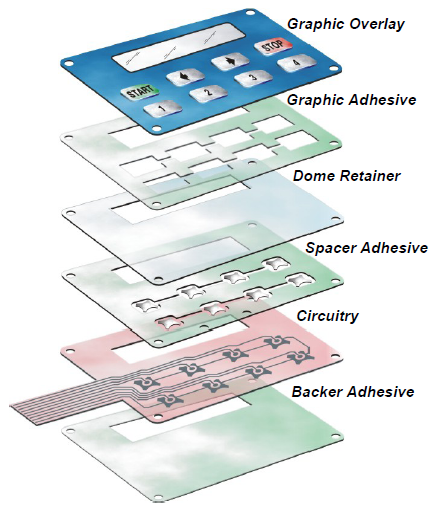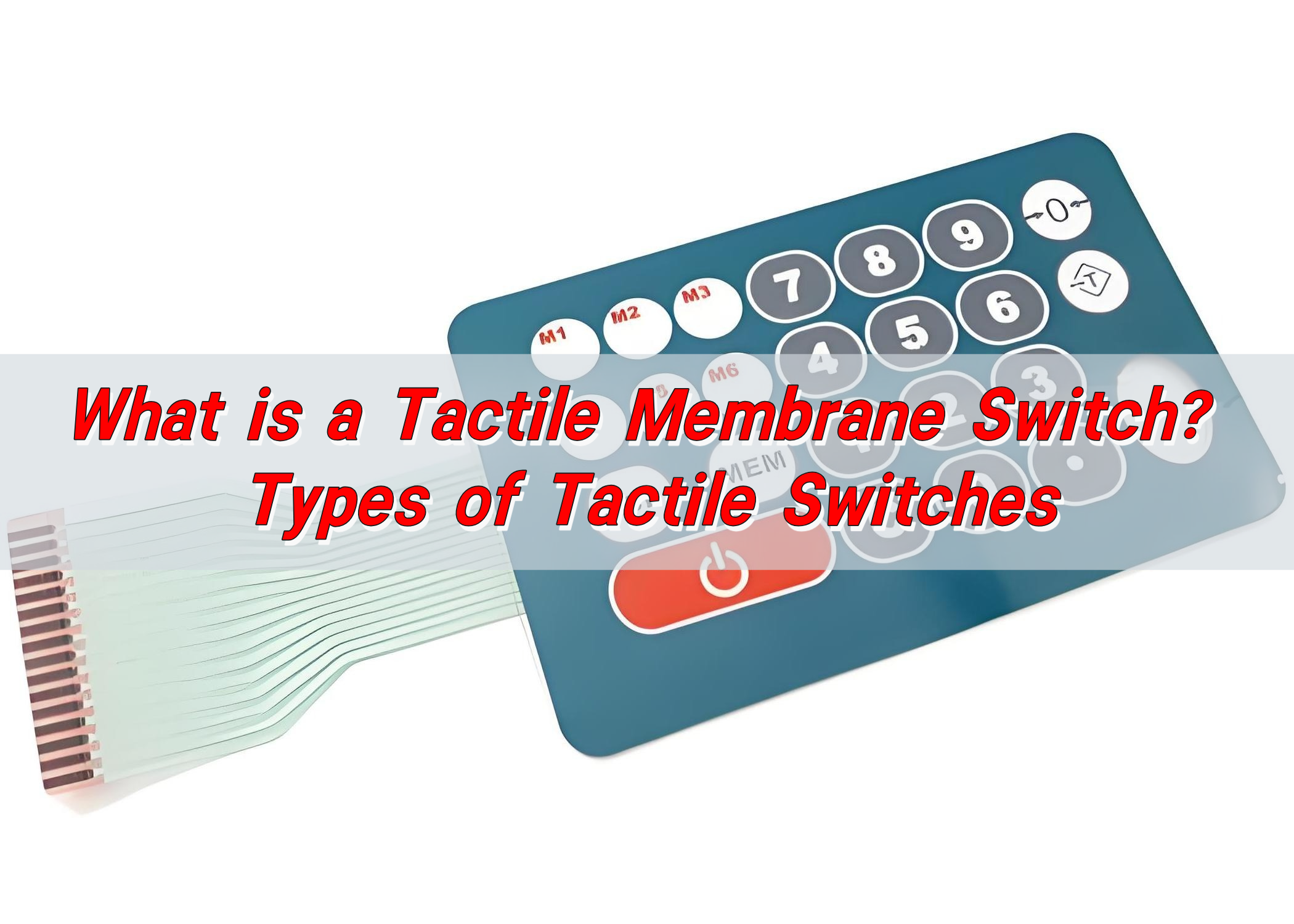Understanding the Importance of Membrane Layer Change in Modern Electronic Devices
Membrane switches are integral elements in modern-day electronic gadgets. They offer a blend of capability and design that improves user interaction. Their durable and lightweight nature makes them suitable for various applications. As markets develop, the need for modification and progressed attributes grows. Recognizing just how membrane changes add to development discloses their importance fit the future of electronic devices. What exists ahead for this technology?
The Fundamentals of Membrane Change Modern Technology
Commonly forgotten, membrane layer button innovation plays a crucial duty in the modern-day electronic devices landscape. These gadgets, made up of several layers, work as individual interfaces for different digital items, varying from family appliances to clinical tools. A normal membrane layer button contains a graphic overlay, a spacer layer, and a circuit layer, which are carefully set up to produce a practical interface.When stress is applied to the overlay, the circuit layer is finished, permitting signals to be transferred to the device. This modern technology is recognized for its convenience, making it possible for modification in form, performance, and design to fulfill certain individual needs. In addition, membrane buttons are lightweight and thin, making them suitable for applications where area is a premium. Their sturdiness and resistance to environmental aspects further improve their charm, guaranteeing they can hold up against extreme problems while preserving functionality. Generally, membrane switch innovation is important to creating straightforward and reliable digital gadgets

Secret Advantages of Membrane Layer Switches Over
Membrane layer changes offer numerous vital benefits that make them a preferred option in different digital applications. Their layout permits for a small type variable, allowing producers to create light-weight and sleek gadgets. Additionally, membrane layer buttons are resistant to dirt, moisture, and chemicals, which boosts their resilience and longevity in demanding settings. The tactile feedback given by these switches can boost individual experience, making them user-friendly and very easy to operate.Furthermore, membrane layer buttons can be personalized with diverse graphics and colors, permitting one-of-a-kind branding opportunities. The production procedure is normally affordable, specifically for high-volume production, as it lowers setting up time and streamlines style. Lastly, membrane layer changes require very little upkeep, adding to lower general operational costs. These advantages underscore their growing popularity in modern-day electronic devices, where dependability and user-friendly interfaces are important.

Applications Throughout Numerous Industries
The adaptability of membrane switches over enables their prevalent adoption across numerous sectors. In the clinical area, they are generally used in diagnostic tools and client monitoring systems, providing a resilient user interface immune to contaminants. The vehicle sector makes use of membrane layer buttons for control panel controls, enhancing individual experience with sleek layouts that withstand extreme problems. In customer electronics, they offer as control board for devices such as microwaves and coffee manufacturers, providing an user-friendly interface that is easy to tidy. The aerospace industry employs membrane buttons in cockpit controls, where reliability and area effectiveness are paramount. In addition, the commercial sector leverages these buttons in machinery and control systems to guarantee durable operation popular environments. This wide series of applications emphasizes the adaptability of membrane layer buttons, making them indispensable parts in enhancing functionality and individual interaction throughout diverse technical landscapes.
Personalization and Style Flexibility

Future Fads in Membrane Layer Change Advancement
Arising trends in membrane button development show an expanding focus on click site improved functionality and integration with smart modern technologies. As customer demand for more innovative electronic tools rises, suppliers are focusing on producing membrane switches that not just offer standard operational roles however additionally integrate features like touch sensitivity, backlighting, and haptic feedback.Furthermore, developments in materials are expected to improve toughness and environmental resistance, making membrane layer changes ideal for diverse applications in markets such as healthcare, automobile, and customer electronic devices. The integration of capacitive touch technology is likely to come to be much more prevalent, enabling for sleeker designs and improved individual interfaces. membrane switch.Additionally, the surge of the Internet of Points (IoT) is prompting the advancement of membrane switches that can connect wirelessly with other devices, improving interconnectivity. Overall, the future of membrane switch modern technology appears appealing, driven by technology and the pursuit of user-friendly services
Frequently Asked Questions
How Do Membrane Layer Switches Contrast to Standard Mechanical Switches?
Membrane layer buttons, being a lot more space-efficient and using a smooth design, comparison with traditional mechanical buttons that provide responsive feedback. The previous often feature personalized graphics, while the last commonly assure longevity and dependability in various applications.
What Products Are Generally Utilized in Membrane Layer Switch Over Manufacturing?
Membrane switches are generally created using products such as polyester, polycarbonate, and published conductive inks. These products provide flexibility, resilience, and responsiveness, making them ideal for numerous applications in electronic tools and individual interfaces.
Can Membrane Switches Over Be Repaired or Recycled?
Membrane buttons can commonly be repaired, specifically if minor concerns arise, such as sticky failing or surface area damages. Nevertheless, full reuse is usually limited as a result of use and prospective destruction of products with time.
Just How Do Ecological Factors Influence Membrane Switch Over Performance?
Environmental variables, such as temperature level, direct exposure, and humidity to chemicals, substantially influence membrane layer switch performance. Extreme problems can bring about degradation, impacting responsiveness and longevity, eventually endangering the capability of the tool in various applications.
What Is the Common Life Expectancy of a Membrane Switch over?
The normal life expectancy of a membrane button generally ranges from 1 to my review here 5 million actuations, relying on factors such as use regularity, environmental conditions, and the products used in production, affecting toughness and performance long life. A common membrane layer switch is composed of a graphic overlay, a spacer layer, and a circuit layer, which are carefully constructed to develop a practical interface - membrane switch.When stress is used to the overlay, the circuit layer is completed, permitting signals to be transmitted to the gadget. The tactile feedback supplied by these switches can enhance individual experience, making them user-friendly and very easy to operate.Furthermore, membrane layer switches can be customized with diverse graphics and colors, allowing for one-of-a-kind branding possibilities. As consumer need for more innovative electronic devices rises, suppliers are focusing on developing membrane switches that not only offer basic operational duties however likewise include attributes like touch sensitivity, backlighting, and haptic feedback.Furthermore, advancements in materials are anticipated to improve resilience and ecological resistance, making membrane switches over appropriate for diverse applications in markets such as healthcare, automotive, and customer electronic devices. The combination of capacitive touch innovation is most likely to end up being extra widespread, allowing for sleeker styles and improved individual interfaces.Additionally, the rise of the Net of Things (IoT) is prompting the growth of membrane layer switches that can connect wirelessly with other devices, boosting interconnectivity. Membrane click this layer switches, being extra space-efficient and supplying a smooth design, contrast with conventional mechanical buttons that supply tactile responses